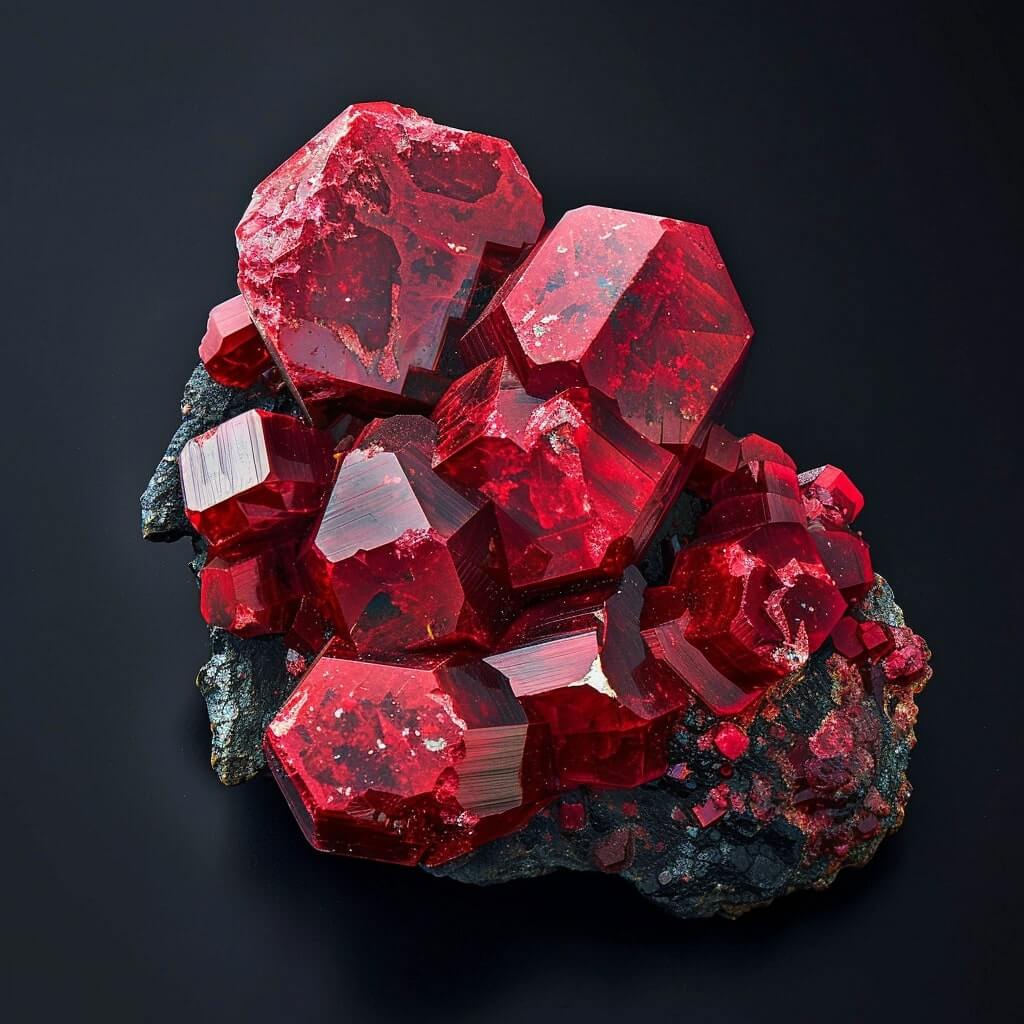Meaning & Power
Imagine stumbling upon a vibrant treasure, a mineral gleaming with the intensity of liquid mercury and the fiery hue of a setting sun. This is Cinnabar, a gemstone as mysterious as it is beautiful, believed by many to harness transformative powers. Often referred to as the “Merchant’s Stone,” Cinnabar is thought to attract abundance and wealth, making it a favored talisman among traders and entrepreneurs. Beyond its material allure, this stone is a spiritual alchemist’s dream, believed to enhance personal growth and transformation. Its strong association with the realm of magic and alchemy underscores its potential to turn one’s intentions into tangible outcomes, making it a powerful tool for those seeking change.
Exploration & Origins
Cinnabar’s history is as rich and vibrant as its color. Known since ancient times, this mineral was prized for its vermillion pigment, used in art, decoration, and cosmetics across civilizations from China to Rome. Historically sourced from the Almadén mines in Spain, the largest mercury deposit in the world, and the ancient Huancavelica mine in Peru, Cinnabar has been a symbol of wealth and status. In Chinese culture, it was used to craft exquisite lacquerware, reserved for emperors and nobility, embodying both beauty and power. The connection between Cinnabar and the quest for eternal life, through the ancient practice of alchemy, highlights its deep-rooted significance in human history and spirituality.
Practical Uses and Applications
Despite its toxic nature when improperly handled, Cinnabar’s metaphysical properties offer profound benefits. It’s often used in Feng Shui to attract wealth and resolve conflicts, placed in cash registers or wealth corners of homes and businesses. As a jewelry piece, it serves not only as an enchanting accessory but also as a talisman to foster communication and assertiveness. For those drawn to spiritual practices, meditating with Cinnabar can ignite inner transformation, facilitating a deeper understanding of one’s true path.
Folklore and Symbolism
Legends imbue Cinnabar with mystical properties, believing it to possess the essence of the dragon’s blood, a symbol of life force and power. In alchemy, it represents the dual nature of existence—its ability to give life through its mercury content and take it away. This duality mirrors the human journey, encapsulating both creation and destruction, reminding us of the balance necessary in all things.
Different Types of Cinnabar
Cinnabar is primarily found in its vibrant red form, a captivating allure that has fascinated many. However, it can also present variations, including those intermingled with quartz, enhancing its beauty and metaphysical properties. This combination is believed to amplify Cinnabar’s ability to attract wealth while grounding its energies, making it even more potent for those seeking to balance material and spiritual worlds.
FAQs
When handled correctly, such as in lacquered or encapsulated forms, Cinnabar is safe for personal use and as a decorative element.
Yes, meditating with Cinnabar can help focus intentions on personal growth and transformation, though it’s advised to use it in a way that avoids direct contact with powdered forms.
Due to its mercury content, it’s best to cleanse Cinnabar with smoke from sage or sound vibrations rather than water immersion.
Traditionally known as the “Merchant’s Stone,” it’s believed to attract abundance, making it popular in business and trading environments.
Many believe that Cinnabar, with its transformative properties, can be a powerful ally in spiritual journeys, fostering deep internal change and enlightenment.



